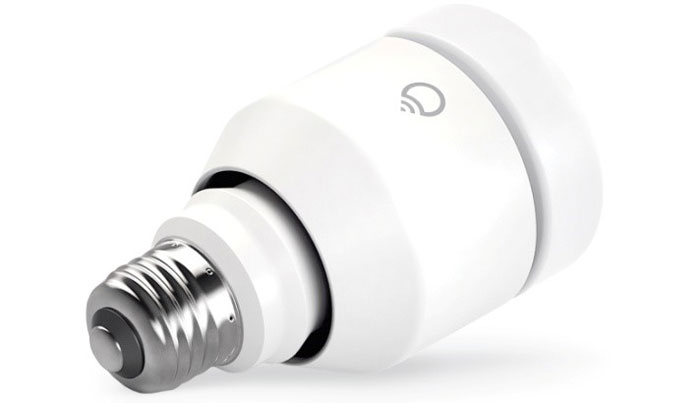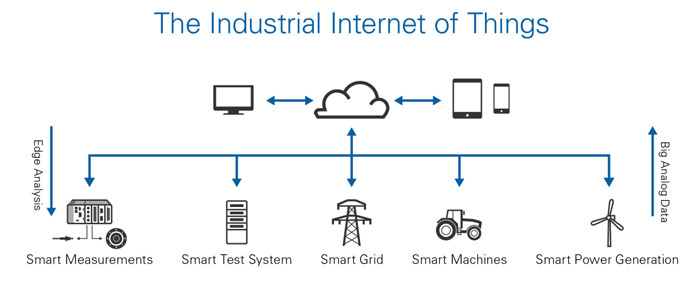It’s time to overdesign for flexibility
Tired of the countless articles talking about the Industrial Internet of Things (IIoT)? Surely all of the pundits, industry leading companies, and technology providers excited to share their perspective on the growing impact of the IIoT have exhausted the topic.
By Jeffrey Phillips, Section Manager - Software, NI
Instead of focusing on what the IIoT is, this article takes the opposite approach and talks about what the IIoT isn’t. Let’s be honest, the IIoT isn’t defined. It isn’t a known target with a clear set of parameters and rules. But there’s one thing we do know - as we build and define the IIoT, it’s critical that providers overdesign their technology offerings for flexibility.
The moving target that is the IIoT
Industry giants have formed consortiums to both vet the foundational technology that the IIoT will be built on and define the standards that will facilitate future communication protocols. The Industrial Internet Consortium (IIC) has established three active testbeds with Bosch, Cisco, NI and, Tech Mahindra to explore track and trace in the Factory of the Future; Cisco, NI, and Real Time Innovations for microgrid; and EMC and Cork Institute of Technology for INFINITE.
The Open Interconnect Consortium (OIC) is where companies such as GE, Intel, and Samsung are collaborating to ensure the connectivity between these evolving standards.
As these issues are being actively defined, the brownfield of existing systems, machines, and infrastructure still needs to evolve to incorporate these standards and protocols.
How do you do that? Flexible software is the answer.
Software will define the IIoT
Perhaps the most tangible change in the way systems will be designed moving forward is the expanding role and importance of software. The seminal idea behind intelligence holistically depends on software. Without software, hardware is 'dumb'. The physical interface is the entity that enables action - through the activation of an actuator or the closing of a valve - but the software processes information to make the decision that powers the action itself.
Consider the deployment of an airbag in your car. It isn’t some elegant design of physical switches that releases a lever to deploy the air. It’s a software algorithm that triggers the actuator.
Regardless of industry, market, or product, every company will become a software company.
In the consumer market, software-defined systems have already proven to demand significantly higher profits through a much improved user experience.

Figure 1: Highly commoditised products like the LIFX light bulb are now being sold at extreme profits because of the software. Photo Courtesy of LIFX Company
Once highly commoditised products, such as phones, light bulbs, and watches, are now being sold at extreme profits because of a software interface that adds an enriched user experience, value through data connectivity, and an open ecosystem that provides peripheral value far beyond the capabilities of the vendor. In many ways, the software is reinventing the hardware.
It’s now time for the machines and infrastructure of the world to follow suit. From energy grids to production factories to heavy machinery, the macroeconomic value and impact of connecting these data sources together is far too great to ignore. Although the challenge is clear, the 'how' is not. The traditional design approach is defined by separate teams armed with disparate software tools that lack the sophistication to interoperate. The design times of ten years ago allowed for the lack of velocity in this design cycle. However, today’s time-to-market pressures combined with the acceleration in the definition of communications standards makes this design approach antiquated.
Enter the software platform.
Defining systems with a software platform
The market is full of amazing tools that have proven their value over the years. From TwinCAT to MATLAB to LabVIEW, these products have provided innovative functionality that has benefited engineers and scientists. But, the market is lacking a true software platform that enables the next wave of innovations at a pace that we simply just haven’t seen.
Instead of individual tools designed to solve a specific challenge, a software platform is a combination of capabilities, protocols, development approaches, and hardware interface APIs. The key to the platform is in the nature of this combination. The platform gives end users the collective power of these components, but is built in a way that the components are individually upgradeable and expandable and easily innovated upon. In other words, the platform has ultimate flexibility.
The undefined, constantly moving, and always evolving nature of the IIoT demands this flexibility. Any individual, vendor-defined tool that claims to be the answer is just plain wrong.

Figure 2: The most daunting IIoT challenges are latency, device synchronisation, security, upgradeability, and end-to-end data analytics.
The flexibility of a software platform helps engineers tackle the most daunting aspects of the IIoT: latency, device synchronisation, security, upgradeability, advanced control, and end-to-end data analytics. Similar to intelligent decision making, each of these challenges presents itself within every layer of a system of systems. Distributed networks of intelligent nodes, connected networks of smart machines, even the wholly connected factory floor must solve these challenges in a manner that can be changed, upgraded, and enhanced in six months, two years, or five years as new standards and requirements are defined.
Ultimately, the products built from a software platform will be the interface engineers use to solve these challenges. But the software platform itself - the foundational infrastructure - will be the building block that defines the products. A value of the platform is the ability to customise components of that delivered product to the specific needs of the problem.
In Crossing the Chasm, Geoffrey Moore described this as 'vendors must clothe their platforms in applications clothing'. Much like the Betamax, cassette tapes, and dial-up Internet, cassette tapes, and the ‘60s, general-purpose tools will become things of the past. The market demands the specificity of the tool to keep the challenges approachable, even solvable.
The industry's only engineering software platform
In the race to define the technologies that the IIoT will be built on, the company that thinks about the engineer doing the building and defining the next wave of products used to design, build, and test the connected machines will be the company that comes out ahead.
NI is building the industry’s only true engineering software platform. Built off of 30 years of investment in LabVIEW software and other engineering-focused software products, NI’s software platform will be the technology that connects engineers to the IIoT. Out of this software platform will emerge software products built to solve specific problems within the larger connected network of systems. The LabVIEW Communications System Design Suite, which provides representative productivity benefits to leading researchers such as Nokia and Samsung, is holistically built out of this platform and 'clothed' in the application needs of wireless prototyping. And this is just the beginning. The question won’t be “why use the NI software platform to solve the IIoT?” The question will be “how could you not?”
Click here to learn more about LabVIEW.










